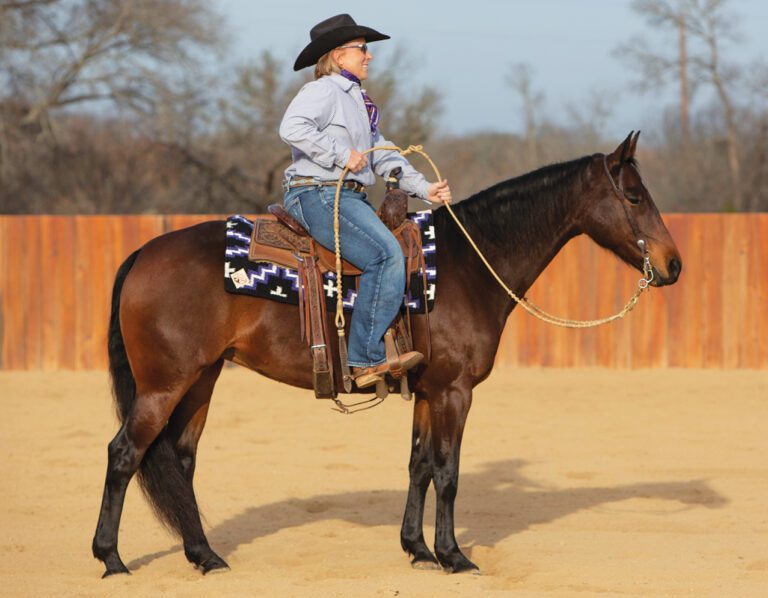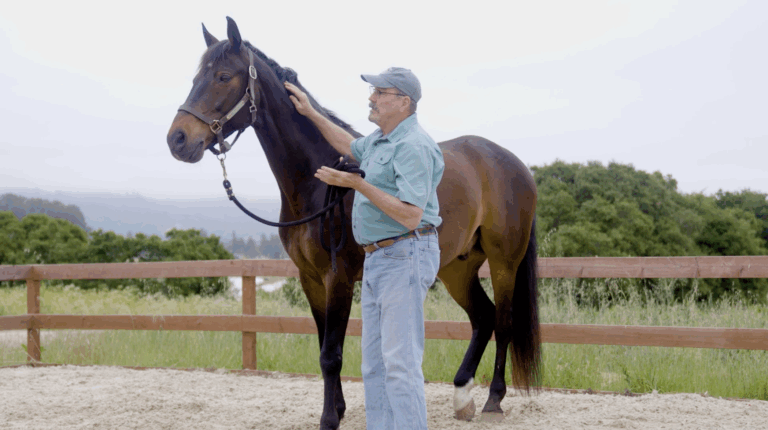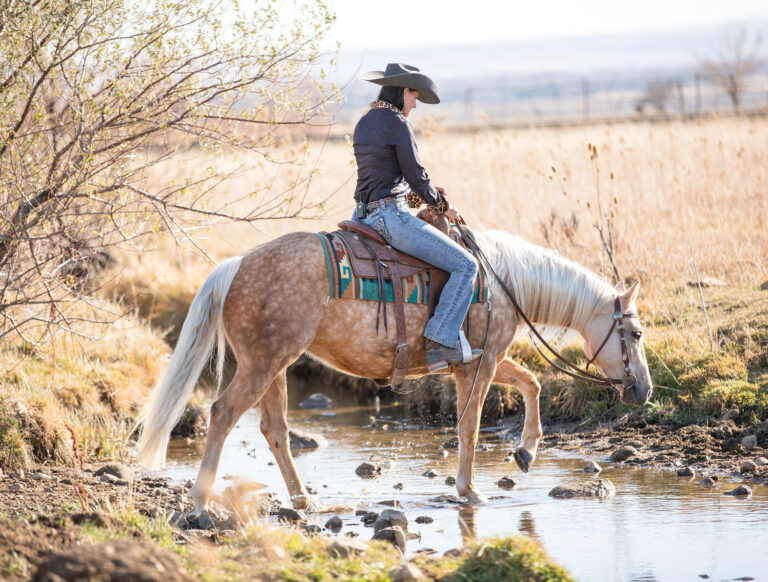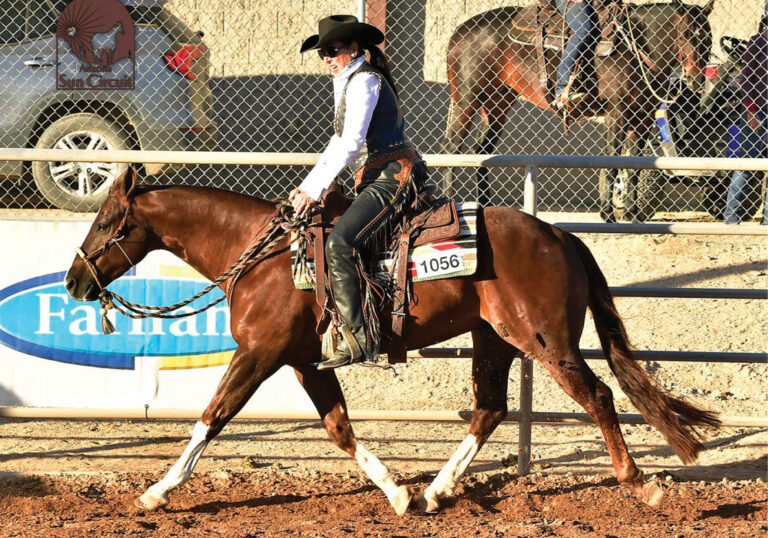At one point, 30 days used to be the most common length of time for a young horse to go into training with a professional. But these days I see more horses staying between 90 to 180 days of training. The shift in time spent with a colt starter is an effort to provide the owner with a horse that they can confidently go home and ride, or help prepare the horse for the next step in his professional training and show career.
Each horse advances at his own pace, whether you put him on a 30-, 60-, or 90-day timeline. This means that one horse may be further along at the end of 30 days than another. It also means that by the 60-day mark that second horse could end up surpassing the first horse in ability. By giving your horse trainer ample time to work with your young horse you also give your horse time to develop at his own pace without being pressured or overwhelmed.
I’ll outline what you can do at home to prepare your horse before you send him off for training, and then go over some of the basic skills you can expect your horse to have after a certain period of time, so you can make an educated decision on what timeframe is best for your horse. Once he’s ready to come home, I’ll go over some of the things you can do with him to keep furthering his education.
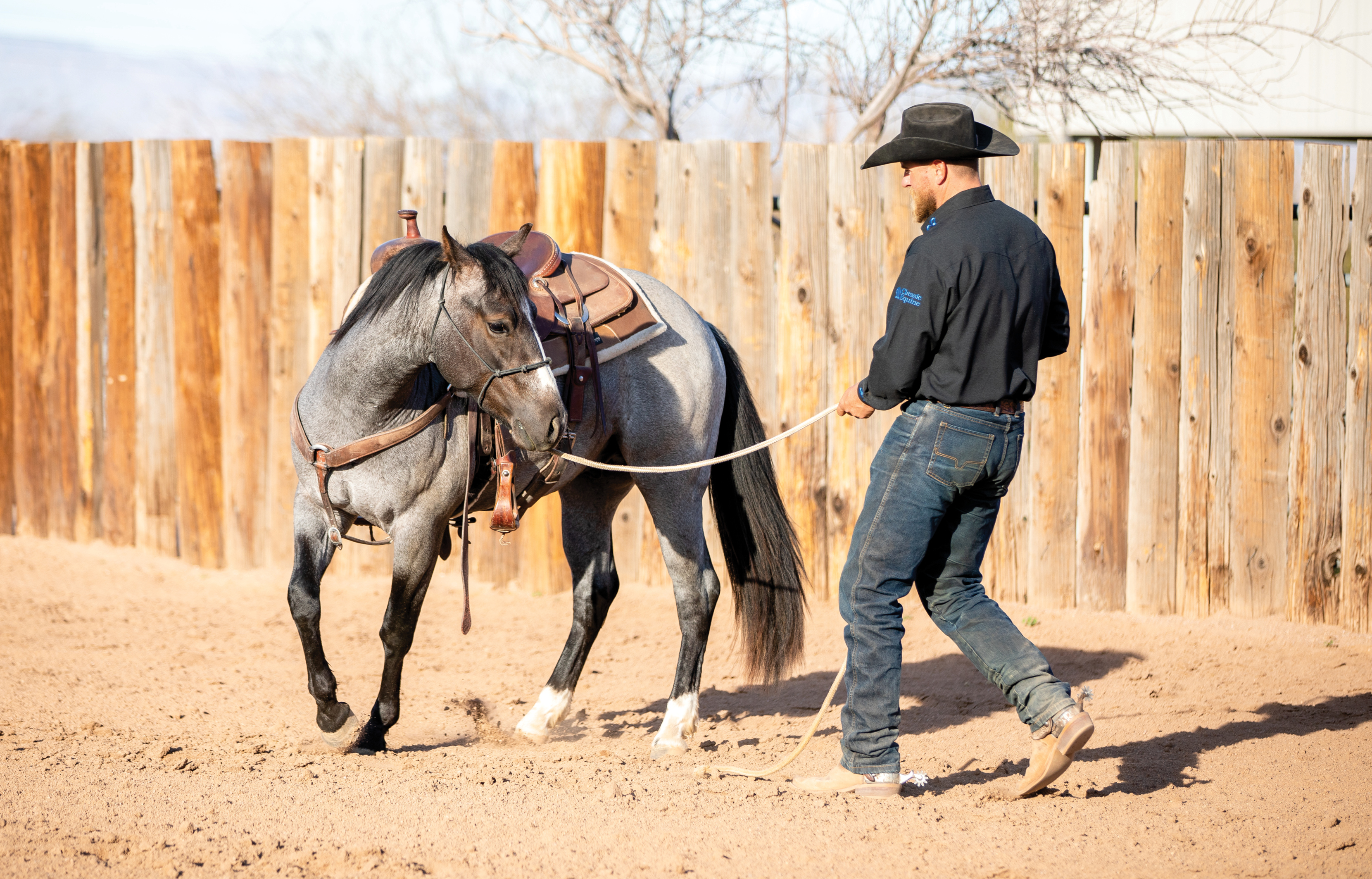
At Home
Before you send a child to kindergarten, they know their ABCs, 123s, and can usually spell their name. You prepare them for school with these basic skill sets to make their formal education easier. The same logic can be applied to your horse. Working with your young horse at home prior to sending him to a trainer helps him transition into your trainer’s program a little quicker.
Teaching your horse how to lead, tie, bathe, and stand while being groomed are a few basic things you can do to set your horse up for success before he even leaves the house. The time you spend working with him will help him gain confidence in humans and let him learn how to trust you.
While the goal is to have your horse be as gentle and quiet as he can be, your safety is also important. If you don’t feel educated enough to work with your horse before he heads to the trainer, it’s OK to do what you can and leave the rest to a professional. You don’t ever want to put yourself in a situation where your safety is at risk. While it’s never good to accidentally teach your horse bad habits, don’t fret too much, your trainer should be able to correct these small habits at this point in your horse’s training since his mind is still fairly easy to mold.
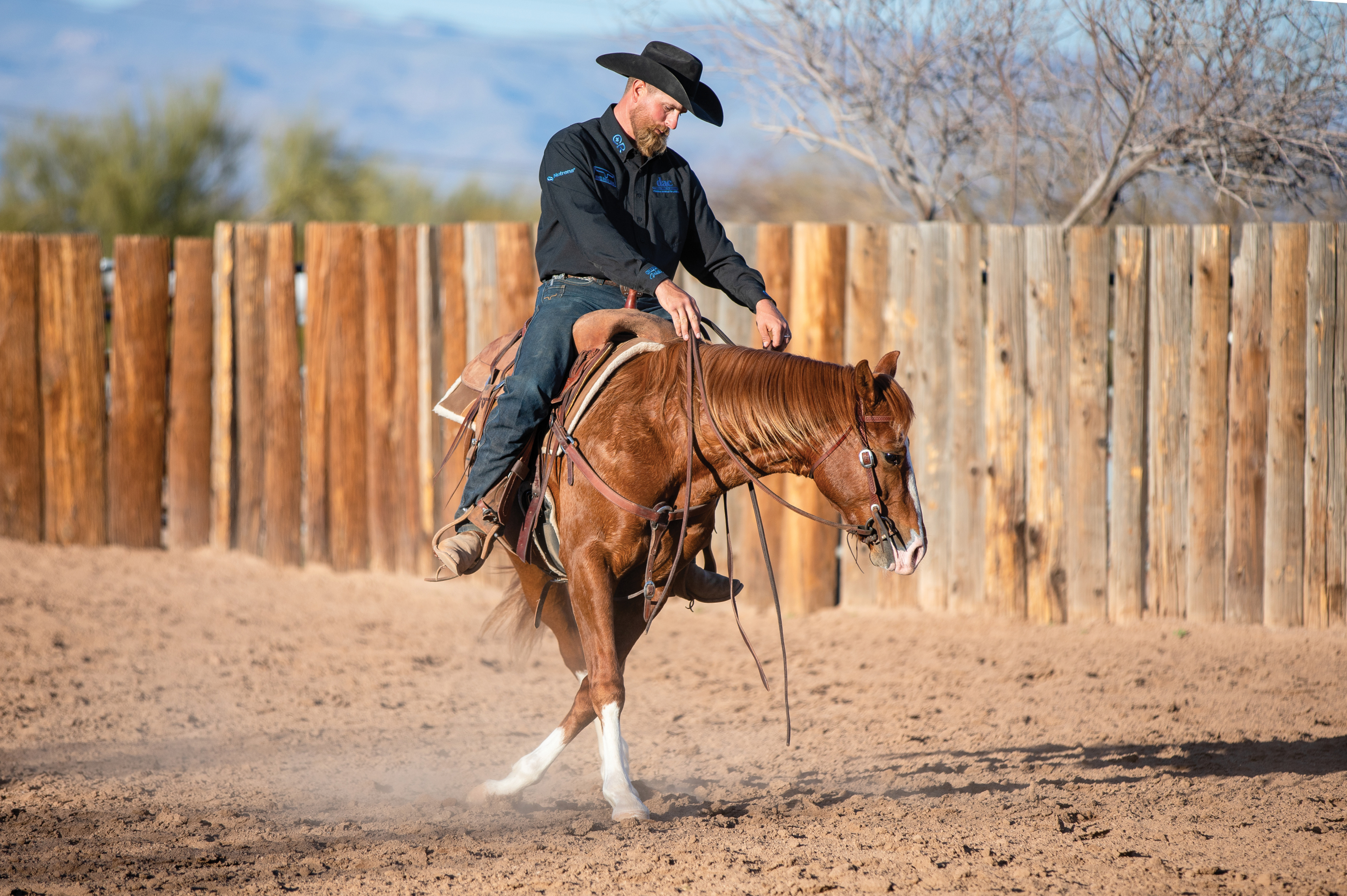
30 Days
What’s he doing? Usually when a horse first arrives at my place, he’s coming from a life in the pasture without much of a training routine, which usually means he’s also out of shape and lacking muscle tone. To prevent injury from working too hard, and to help him build more confidence, I like to start with a fairly light workload that includes lots of groundwork.
Groundwork is a great way to instill basic skills within the first few days of training, and avoid putting too much pressure on a new horse. I like to start by using a rope halter and lead rope, and having the horse walk and trot around me with shape, where his head and neck go toward me and his shoulder and body are positioned slightly away. As I’m getting him to work around me, I start stepping back and applying pressure to the lead to encourage him to come out of the circle in a straight line.
Circles
These groundwork circles are the foundation of my training program and teach him how to drive from behind, which helps develop cadence at all gaits and allows him to drive underneath himself when it’s time to start working with him under the saddle. It’s normal for a young horse I’m working with to be a little fast and out of control the first couple of times I do this drill, but as he progresses he’ll start to learn how to have forward motion, and walk and trot with purpose.
Once he’s capable of trotting a few circles with control and collection, I start to work him on the rail of the round pen with a longe line. I ask him to travel each direction at all three gaits and work on having forward motion at each gait. My goal is to have my horse stay consistent in speed for each gait for longer periods of time. That way, when it comes time to get on him for the first time, he’s comfortable being told to go forward.
On the first ride, my horse should be able to walk, trot, and lope both directions. It remains very simple and black and white for him to understand: Left is left, right is right, and picking up on the reins means stop.
Can he come home?
By the end of 30 days, the horse I’m working with may just be starting to ride outside of the round pen. Simply put, a trainer can’t do much in 30 days if they’re taking their time and going through the steps to properly give a horse the confidence he needs to be successful later on. A horse at 30 days may go on to be in another professional trainer’s program to add more specialization, but he still needs more professional training before going home to most horse owners.
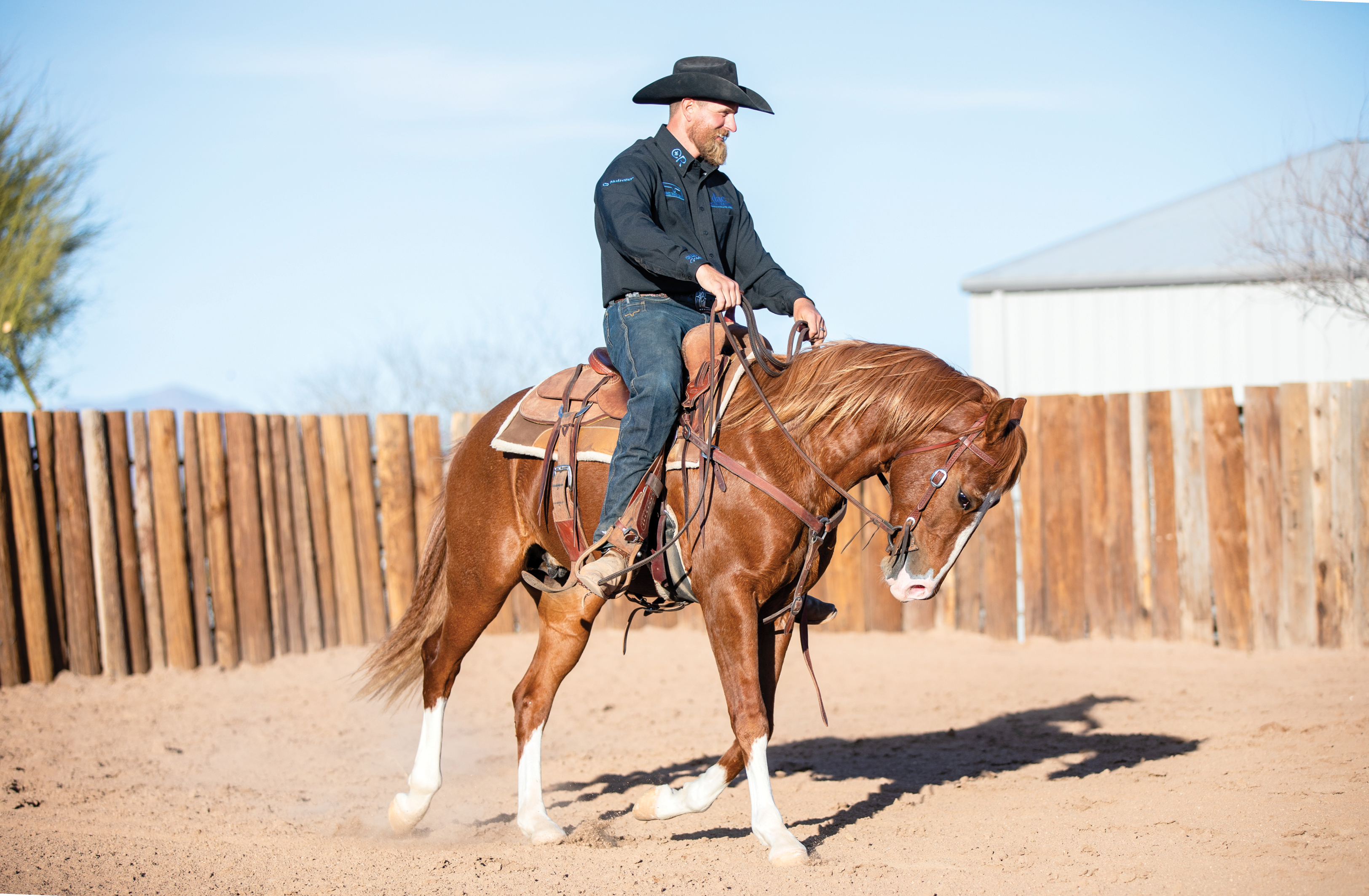
60 Days
What’s he doing? Between 30 days and 60 days is where a horse I’m working with begins to cement the concepts that he learned in the first month. He’ll start learning the basic fundamental skills that set the framework for competitive events. Now instead of just going forward and letting him go where he wants, he’ll start to learn how to ride on the rail. Once he can do that, he can start circling and learning how to step over off of rein and leg pressure as he rides around the round pen.
Trot circles still play a critical role in this phase. By now these circles should evolve into basic turnarounds and also help him have a better understanding of leads. Mental pressure is still off at this point. And the horse I’m riding is coming into the maneuvers on his own. While I might ask him to do different gaits and guide him around, I patiently wait until he’s ready. Rather than forcing him to do something. Once he grasps the basics and is riding around with some confidence, then I’ll start asking more out of him when it comes to correctness in maneuvers.
During that 60-day period, I start riding out on trails and around the barn to get exposure to the sights and sounds beyond the arena. At this point in his training, he’ll have a basic understanding of cues. He will start to have some muscle memory, and is in better physical condition, which allows for longer training periods.
Can he come home?
If you’re a confident rider who has prior knowledge of working with young horses, you could take your horse home at this phase. But he’s generally still not solid enough in his training to progress without professional experience. As a trainer, it’s my job to listen to the horse I’m riding. And let him express when it’s time to progress—a skill that’s developed and finely tuned after years of working with young and inexperienced horses. Your horse will need this same kind of support from you if you take him home after 60 days. This period is where he needs to keep gaining confidence to help him get past any plateaus. If you’re not familiar working with young horses you can accidentally cause him to take a step back in training.
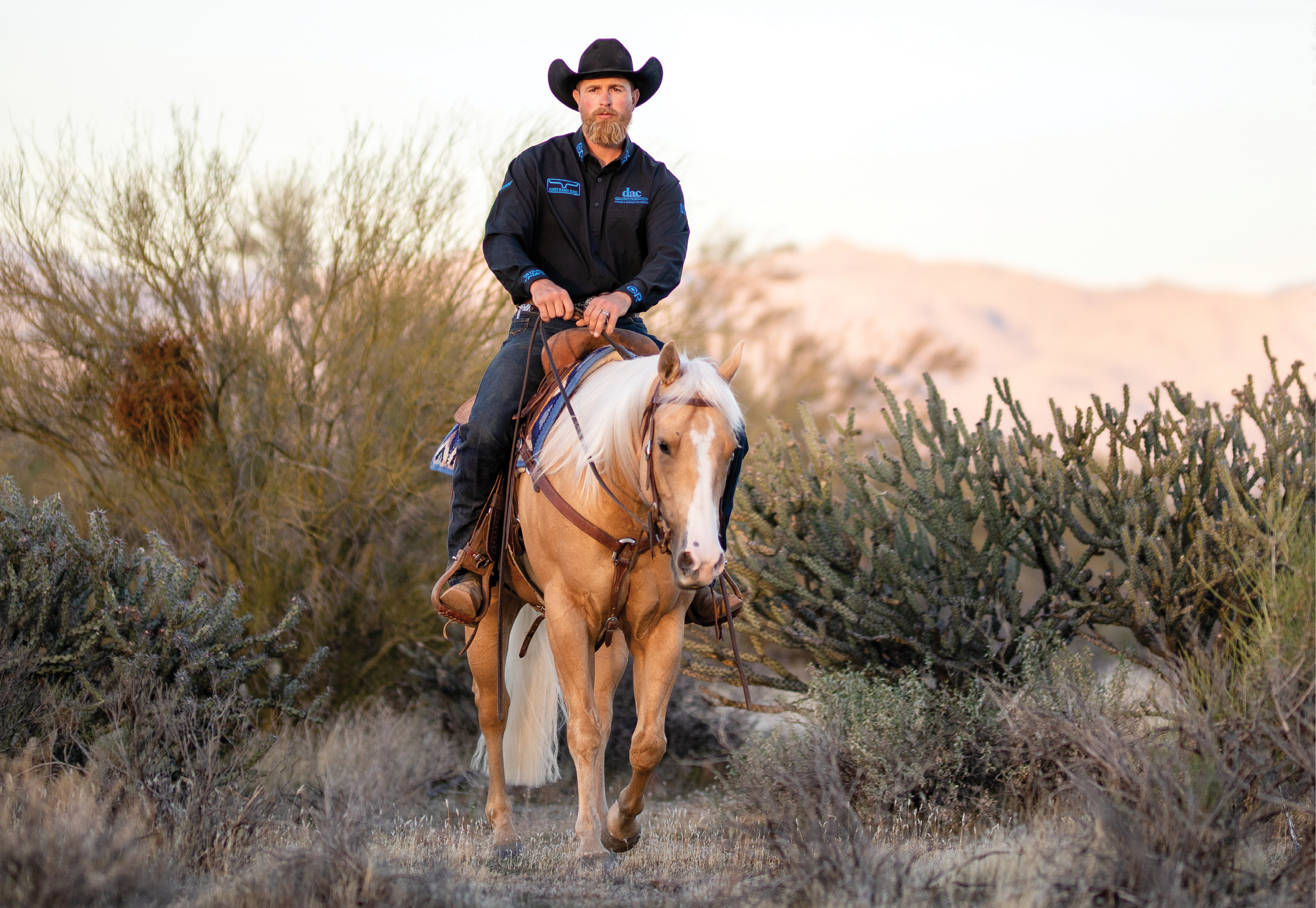
90 Days
What’s he doing? By the end of 90 days, a horse I’m working with should be able to walk, trot, and lope in collected circles going both directions and in straight lines. If I pull my feet away from his side or pick up on my reins, he should be able to read that as a stopping cue. He’ll know how to pull his nose left and right and be able to move his feet to follow his nose around. Depending on the natural skill of my horse, he’ll also be able to perform a basic turnaround.
Before a horse heads home from my barn, he’s been out on trail rides, has dragged a log, had a rope swung off of him, and has been shown a variety of skills that’ll help him excel in his potential event. (For example, if I have a horse that’s going to be a cutter or cow horse, I’ll spend time introducing him to the flag or ride him around cattle.)
Can he come home? At this stage of training, your horse is both mentally and physically ready to return home. He’s starting to look for cues and is focused and listening to his rider. By now he has a solid riding foundation and is ready to go on with his next step in training—whatever that may be.
After Training
The end of his 90 days in training with a professional is not where the learning stops. Your horse may be looky as you ride him the first few times, since he’s been taken from his learning environment, but eventually he’ll settle in and ride like he did before you took him home.
After he’s settled in and riding comfortably, start putting him in situations that are beyond his comfort zone, like riding down a more advanced trail or asking him to perform a more advanced maneuver in the arena. But remember your limits and avoid doing something that will get you or your horse hurt physically or hurt his confidence. He’s moldable at this stage, so the more you can expose him, the less he’ll fret about when he is older.
Finding Success
Use these tips to find success with your horse after you take him home.
• Be Patient: Even after the 90-day program, your horse still needs a patient coach. Being patient with him will pay off as you let him continue to develop at his own pace.
• Work with What You Have: Your job is to get the maximum capability out of your horse, but don’t try to push him past a level he’s capable of.
• Keep Him Guessing: Make your horse wait for your cues by being cautious not to over practice a particular maneuver that the two of you are struggling with.
• Prepare His Mind: Your young horse’s mind is still easily moldable, so preparing his mind to work will ensure he remains on the right track for progression.

